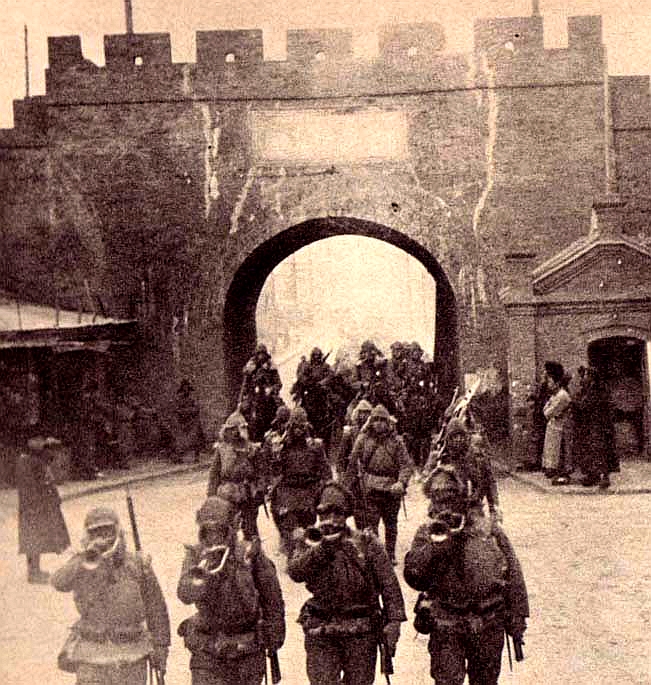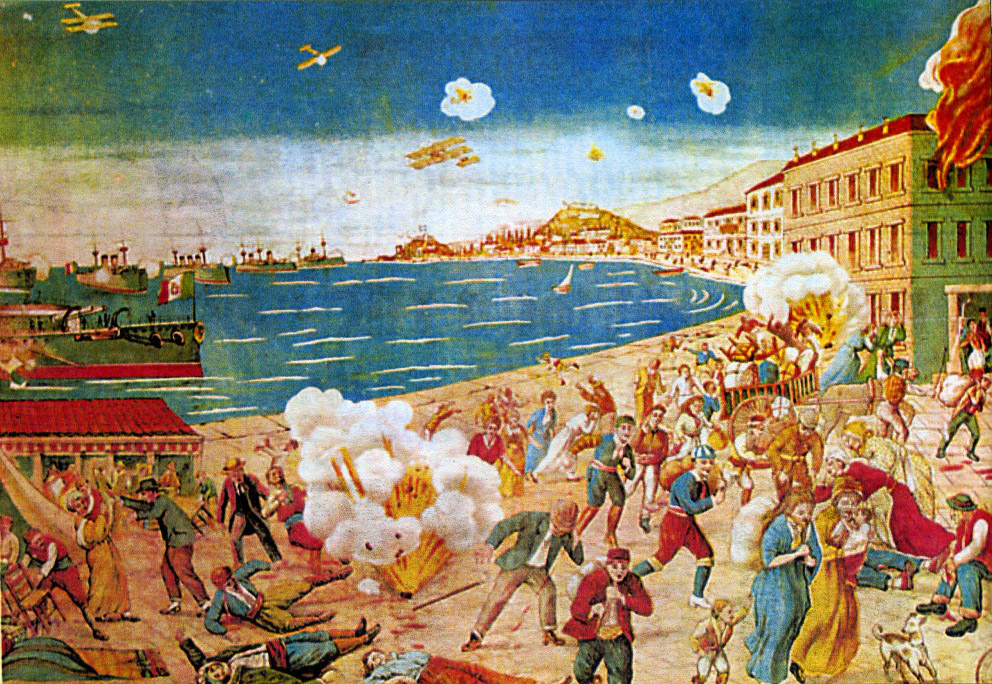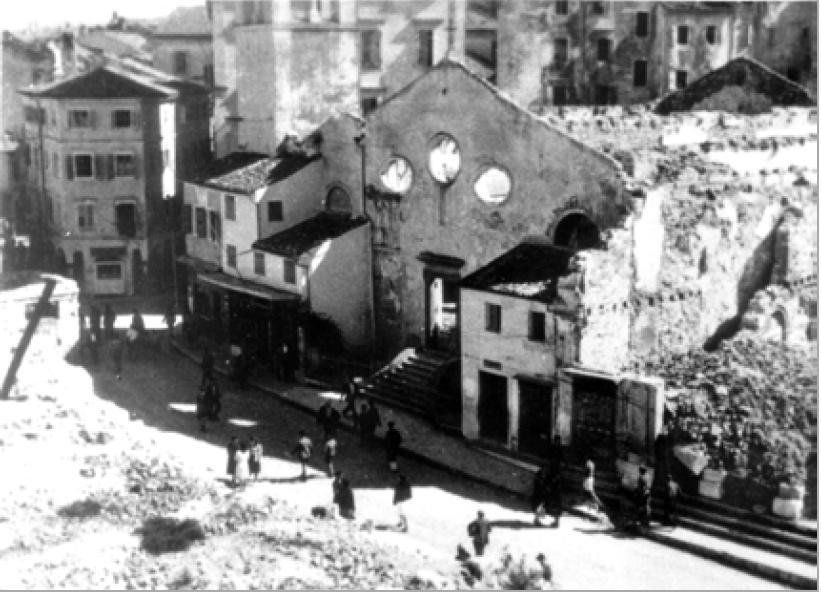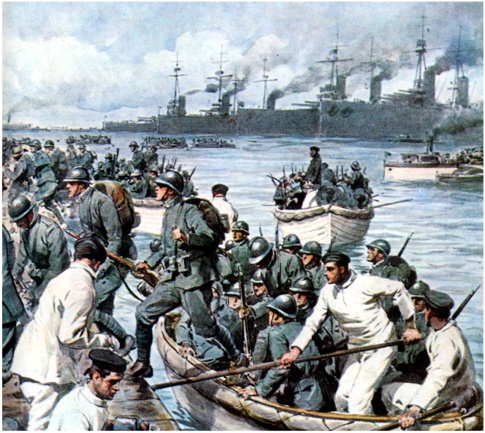Pictured: Imperial troops entering Tsitsihar on November 19, 1931. Click here for more photographs.
The event, known as the Mukden Incident or the Manchurian Incident, became the Imperial pretext to invade and occupy Manchuria. Quoting Louise Young’s Japan’s Total Empire, page 40:
The Kwantung Army set the construction of Manchukuo in motion with the military conquest of the Northeast known as the Manchurian Incident. Between September 18, 1931, and the Tanggu Truce of May 31 , 1933, a series of campaigns brought the four provinces of Jilin, Liaoning, Heilongjiang, and Rehe under [Imperial] military control. The occupation began with a conspiracy engineered by Kwantung Army officers. What had failed in 1928 worked to spectacular effect in 1931.
Staging an explosion of Mantetsu track near the Chinese military base in the city of Fengtian (now known as Shenyang), the conspirators used the alleged attack as a pretext to open fire on the Chinese garrison. Over the ensuing days and months the army quickly escalated the situation, first moving to occupy the railway zone and then embarking on the operations to expel from Manchuria the estimated 330,000 troops in Zhang Xueliang's army.
Unlike in 1928, the metropolitan government ultimately sanctioned army action; the army high command in Tokyo refused to rein in their forces in Manchuria, and the cabinet was unwilling to relinquish territory gained in a fait accompli. Thus the Kwantung Army was permitted to overrun the Northeast, and [the Empire] found itself in full possession of Manchuria.^32^
Now the question that is likely preoccupying you more is why this date, rather than the traditional (and more Eurocentric) proposal of September 1, 1939, should be the real starting point of World War II. If correct, this would mean that WWII lasted for thirteen years and even predated the Third Reich, and for this reason a few scholars refer to this period as ‘the long Second World War’.
Throughout the 1920s, there were plenty of civil wars, uprisings and revolts against local or colonial authorities, and sometimes even border skirmishes between powers. But to the best of my knowledge, there were no major invasions that started in the 1920s (with the possible exception of the Soviet–Georgian conflict, and its international significance is questionable). While the Tibetan Army did invade the Chinese region of Kham in 1930, the Imperial invasion of Manchuria in 1931 was probably the first major invasion in a decade and it would have severer international repercussions.
For example, Geoffrey R. Hamm’s Imperial Defence and the ‘Ultimate Potential Enemy’ shows how this invasion (indirectly) lead to the United Kingdom signing a Navy treaty with the Third Reich in 1935, although in the same text there is the implication that World War II had not yet started:
From the beginning of the crisis Sir Francis Lindley, the ambassador to Tokyo writing in early 1932, held the eerily prophetic view that the
Japanese cannot be turned out of Manchuria without a world war, which it is our first duty to prevent; and that in these circumstances we must trust to the Japanese people gradually realising that they cannot with advantage to themselves pursue a policy of aggression in China in the face of the passive hostility of the rest of the world.^65^
Of course, even in late 1939 there were still some people implying that World War II had not yet begun. For example, quoting from The Rise and Fall of the Third Reich, pages 601–2:
Any idea of mediation [Cadogan said] while German troops are invading Poland is quite out of the question. The only way in which a world war can be stopped is (one) that hostilities be suspended, and (two) that German troops be immediately withdrawn from Polish territory.^7^
While there might not have been a great deal of conflict in Europe (directly) as a result of the invasion of Manchuria, it is worth noting there was almost no military activity on the Western Front from September 1939 to April 1940 either. Furthermore, unlike the 1920s, there were several invasions between 1931 and 1939:
- The Colombia–Peru War (September 1, 1932 – May 24, 1933)
- The Chaco War (June 15, 1932 – June 10, 1935)
- The Saudi–Yemeni War (March 1934 – May 12, 1934)
- The Second Italo‐Ethiopian War (October 3, 1935 – February 19, 1937, which some Africans consider WWII’s beginning)
- And the Second Sino‐Japanese War (July 7, 1937 – September 9, 1945, which some Asians consider WWII’s beginning)
The Spanish Civil War (July 17, 1936 – April 1, 1939) was not, strictly speaking, an invasion, but it did involve German Fascists, Italian Fascists, and Portuguese anticommunists fighting for the Spanish fascists, whereas the Soviet Union (and, it seems, Mexico) fought for the Spanish socialists.
The invasion of Manchuria would have significant influences on European fascism, economically and elsehow. For byspel, quoting Walter A. Skya’s Fascist Encounters: German Nazis and Japanese Shintō Ultranationalists:
Hitler closely followed [Imperial] Japan’s conquests in East Asia in the next several years as [it] successfully nibbled away territory from China through a combination of diplomacy, alliances of expediency, and sheer military power. His interests and those of the [Imperial] leadership converged in various ways, including their common concern about the communist threat.
Reto Hofmann’s The Fascist Effect: Japan and Italy, 1915–1952, page 6:
[The] imperial expansion into Manchuria between 1931 and 1933 played a key role in redefining the relationship between Japanese and European fascisms. The establishment of Manchukuo radicalized Japanese politics. It paved the way to the rise of “reformist bureaucrats,” intensified militaristic rhetoric and policies as well as calls for autarky, and heightened patriotic fervor, giving Japanese across the ideological spectrum a sense that [the Empire] had caught up with fascism.^14^
Paradoxically, the more difficult it became to maintain clear distinctions between Fascist Italy and Imperial Japan, the more fascism appeared obsolescent. And yet […] it was in empire that Imperial Japan, Fascist Italy, and later, Nazi Germany found a powerful ideological common ground.
Page 101:
The Ethiopian crisis dealt a double blow to both political and economic internationalism, signaling a global turn toward the kind of imperial economy that [the Imperialists] had spearheaded in Manchuria.
Page 112:
On November 18, 1936, [Imperial] Japan became the first power to recognize the [Fascist] annexation of Ethiopia and downgraded its embassy there to the rank of a consulate. The Italians reciprocated somewhat belatedly, as it took some time to disengage from its China‐centered foreign policy in East Asia.^14^ But the following year, in November 1937, Italy joined Japan and Germany in the Anti‐Comintern Pact and recognized Manchukuo.
Finally, note the timing of this invasion: it was only two years earlier that the Wall Street stock market crashed and the Great Depression ensued. Quoting from Japan’s Total Empire, pages 36–7:
In 1929, the collapse of the American stock market and ensuing shock wave of global depression dealt the interimperialist alliance another profound blow. All parties responded to the economic crisis with economic nationalism. As they sought to barricade their own interests against any competitors, the imperatives of economic survival seemed to leave less and less room for compromise.
To [Imperial] policy makers this meant sealing off their extensive investments in Manchuria from the rest of China, for special steps seemed necessary to secure a sphere of interest from the forces of Chinese nationalism.
(Emphasis added in all cases.)
Other events that happened today (September 18):
1939: The Polish government of Ignacy Mościcki fled to Romania while the radio show Germany Calling began transmitting Fascist propaganda.
1940: The Axis submarine U‐48 sunk the Allied liner SS City of Benares; those massacred included 77 child refugees.
1943: Berlin ordered the deportation of Danish Jews.
1944: The British submarine HMS Tradewind torpedoed the Axis cargo steamship Jun'yō Maru, tragically massacring 5,600 humans, mostly neoslaves and POWs. Meanwhile in France, the Battle of Arracourt commenced.










